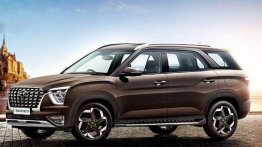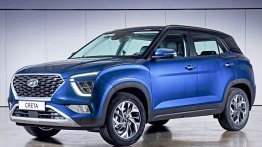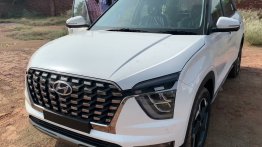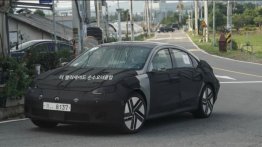The first generation Verna hardly made a mark in India when it was introduced in 2006. The second generation model though, launched in 2011, put the Korean car maker right at the top of the mid-size sedan segment. Things went smooth for the Verna until the December of 2013, when Honda announced and revealed the all-new City, the current segment supremo.
To put in perspective the impact the new City had on the Verna’s sales, the months leading up to the reveal of the new City saw Hyundai sell about 4,000-4,500 units/month of the Verna. In contrast, November 2014 sales of the sedan dropped to 1,588 units while December 2014 was no better at 1,903 units.
Hyundai hopes to regain some of the lost sales with this Verna facelift. Here’s what it is like to drive:
Exterior:

The Indian market Verna facelift is similar in looks to the Russian Solaris facelift which when went on sale in Russia last year. The front fascia sees a major change with redesigned headlights, a new grille and a new front bumper. The sides of the sedan are left untouched.
The rear of the Verna facelift sees subtle changes. The taillights are not LEDs, but give an LED effect thanks to a new enclosure. The rear bumper houses redesigned reflector units, and a black plastic element for a 3D effect. The most significant change at the rear is the concealed housing of the exhaust tips. The Verna, which was the only car in its class to sport dual exhaust tips, will now have them covered it seems.
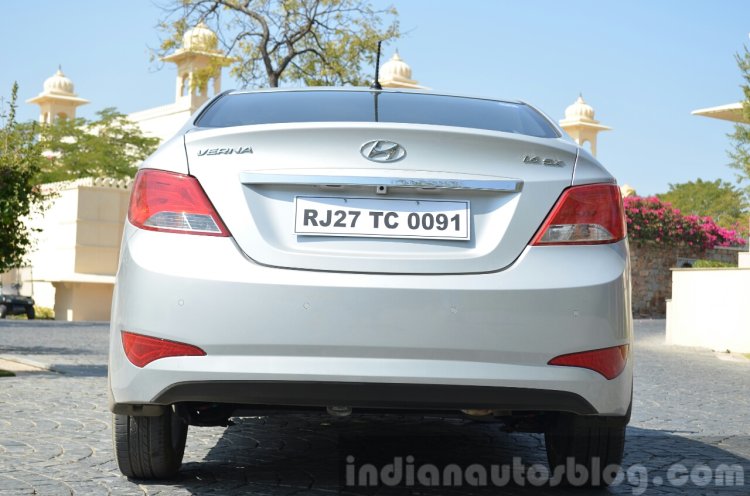
The Verna facelift is dubbed ‘4S Fluidic Verna’ by the car maker, where the ‘4S’ stands for Style, Safety, Sophisticated interior and Speed.
Interior:
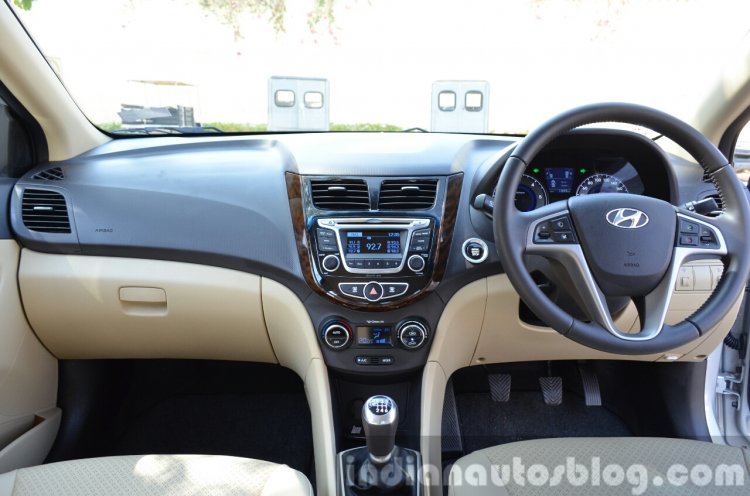
The interior of the Verna facelift is identical to the model it replaces, save for the Ergo lever on the front passenger seat. The rear passenger can adjust the front seat fore and aft with this lever, a la VW Vento feature. There are no changes to the cabin otherwise.
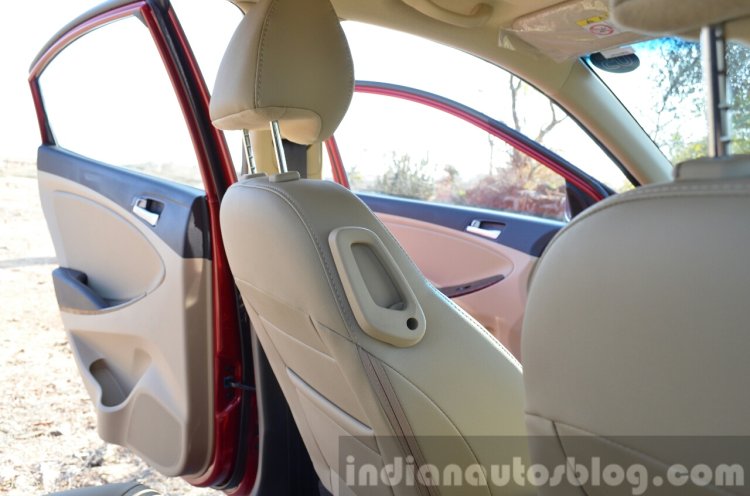
To summarize the interior of the Verna, this is a well built cabin with very supportive seats. Rear seat space is good, but not class leading like in the Honda City. Rear AC vents are not provided on this sedan, despite smaller offerings like the Grand i10 and Elite i20 featuring them.
Features:
When it was launched in 2011, the Verna was the most feature-packed car in its segment. The Verna facelift is not the black sheep in a family of well-specified cars either. Hyundai will in fact offer it with ABS as standard on all models.
Top-end variants get a 6-speaker audio system with 1 GB of internal storage, climate control, 6 airbags, ABS, EBD, projector headlights, diamond-cut alloy wheels, a multifunction steering wheel and Bluetooth connectivity. A touchscreen system, or a navigation system is not on offer. The rear view mirror integrated reverse camera continues to be seen however.
Engine and Gearbox:
There are no changes to the engines or gearboxes of the 4S Verna. The diesel variants are offered with 1.4- and 1.6-liter four-cylinder engines, the latter being paired to 4-speed automatic and 6-speed manual transmissions. The car we drove was the 1.6-liter diesel with the manual transmission. It makes 128 PS and 260 Nm (26.5 kgm) of torque, which are class leading figures.
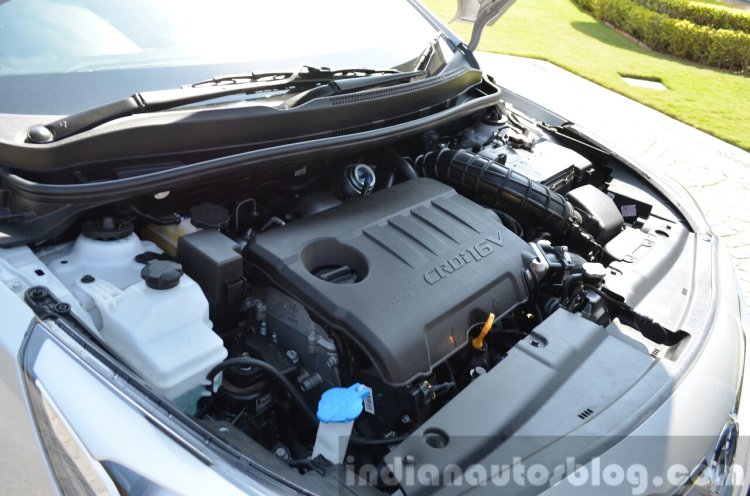
The strongpoints of this unit first. Its incredibly refined and NVH levels can be termed class leading. The gearbox is very smooth, and operating the gearlever often needs just a couple of your fingers.
However, despite the 260 Nm of torque, the Verna doesn’t have the punchy mid-range you get on the Vento or Rapid. Instead, the engine delivers this torque in a linear manner, which makes it relatively hassle free to drive in the city. Maintaining triple digit speeds on the highway is a breeze, and is aided by the tall 6th gear.
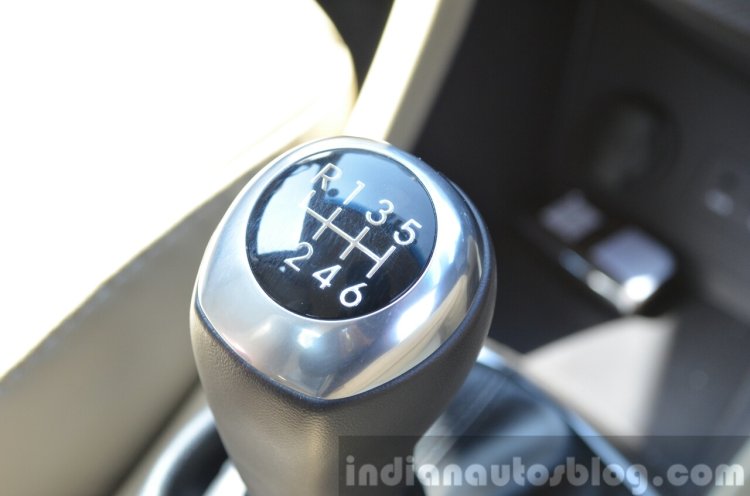
While there are no changes to the powertrain, we’re glad to report that even 3+ years down the line, the Verna’s engine sets the standard for NVH levels in the segment. The capable engine is ideal for city runabouts and highway cruising, it may not have the ability to pin you to your seat, but it certainly has enough grunt for speeds north of 150 km/h.
Ride and Handling:
Hyundai has mildly tweaked the suspension setup of the 4S Verna. The company claims that the ‘thud’ noise when the car enters a pothole is suitably reduced thanks to etching on the suspension components. Compared to the pre-facelift model, we’ll have to agree that there is a very minor improvement in the ride quality of the car. At city speeds especially, the Verna’s ride feels plush and superior to the new Honda City.
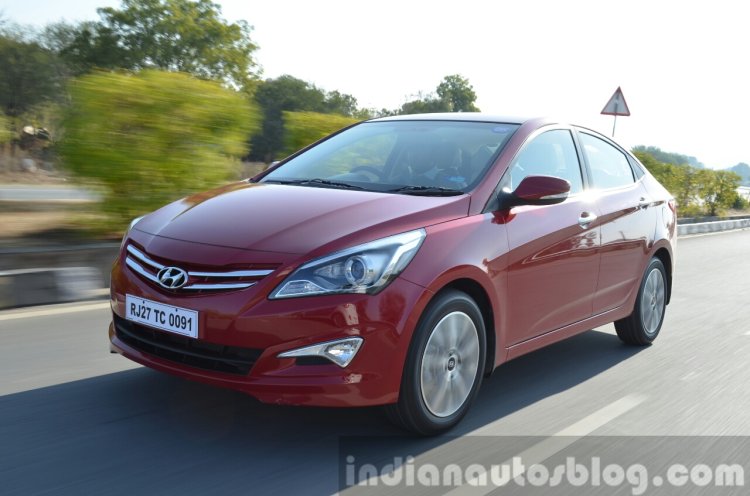
Perhaps a grouse with the Verna has always been its handling and road manners at high speeds. Sadly, the handling, especially high-speed manners leave a lot to be desired even in the 4S Verna. The car doesn’t feel very reassuring to drive through corners at high speeds, and there is plenty of play in the steering itself.
After taking it through city streets of Udaipur and on Rajasthan’s well-paved highways, it appears that the Verna is more comfortable in the former scenario. In the handling department, the Verna is easily outclassed by segment rivals.
Brakes and Safety:
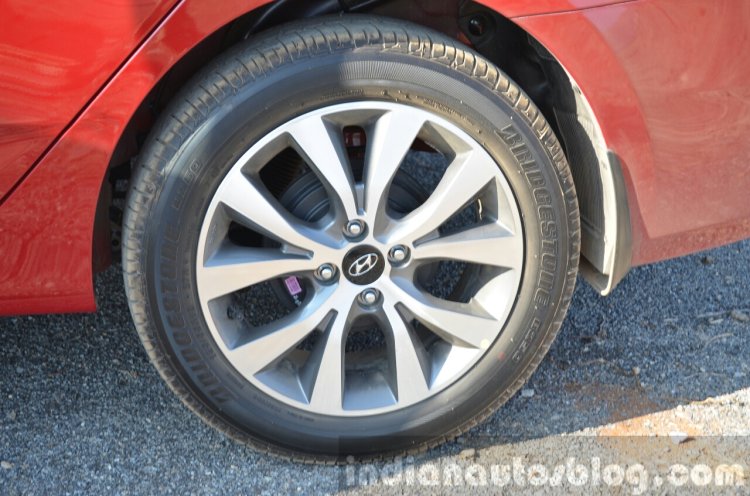
On the safety aspect, all variants of the Verna facelift will come fitted with ABS as standard. Mid-variants will receive dual front airbags, while the top-end variant sees 6 airbags.
In the braking department, we feel there is some room for improvement. Upon repeated stops from 80-0 km/h, the brakes showed signs of fade, and the car's rear especially felt it could step out of line. The brakes are adequate for most scenarios, but during panic braking, the car feels a bit unsettled.
Fuel Efficiency:
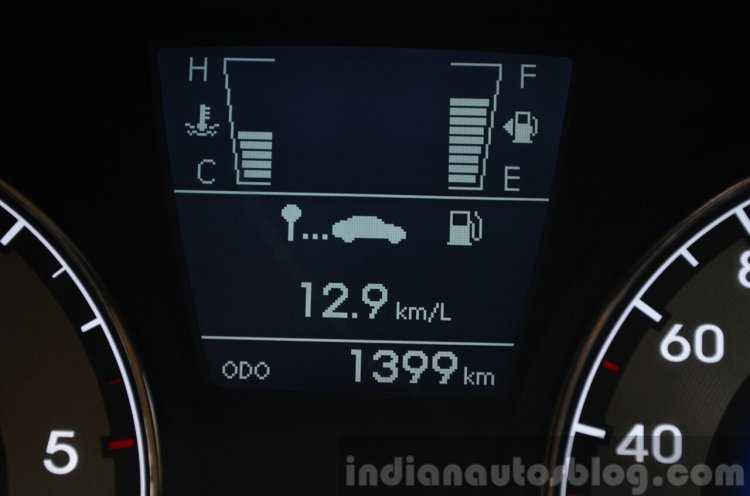
Hyundai claims the diesel manual is good for 23.9 km/l and the diesel auto at 19.08 km/l. In city driving conditions, the Verna diesel manual easily returned 12.5 km/l, while on the highways this stretched to about 17 km/l.
Prices:
Hyundai will announce prices of the new Verna during its launch, scheduled for February 18. For reference, the current Verna 1.6-liter diesel with 6 airbags is priced at INR 11.28 lakhs, ex-Showroom, New Delhi.
Verdict:
Looks being subjective, you would either like or dislike the 4S Fluidic Verna's front fascia. But beyond that, the Verna facelift continues to put up a decent fight in the segment.
The interior of the Verna excels in build quality and choice of materials used. The cabin has most of the features covered, and we have particular praise for the snug fit of the seats. While the rear doesn't offer class-leading legroom, the design of the seat puts you in a comfortable position.
Coming to the engine, drive the Verna diesel in a relaxed manner and you'll begin to appreciate this unit for its low noise levels, and smooth gear changes. That being said, if you’re looking for a mid-size sedan to take on highways primarily, you’re better off with rivals like the Honda City or the VW Vento.
Add to the Verna's package Hyundai’s stellar nationwide network, comparatively lower running and maintenance costs and the strong resale value the Verna commands, and you cannot afford to overlook this Hyundai in your mid-size shortlist.
What we Like:
- Build quality of the cabin
- Diesel engine sets the benchmark for NVH
- Comfortable seats
What we Dislike:
- Steering feel and handling
- Some features like rear AC vents missing















































































